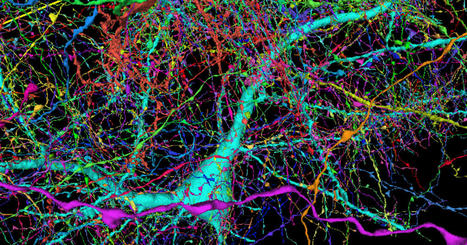The human brain is the most ridiculously complex computer that’s ever existed, and mapping this dense tangle of neurons, synapses and other cells is nigh on impossible. But engineers at Google and Harvard have given it the best shot yet, producing a browsable, searchable 3D map of a small section of human cerebral cortex.
A browsable 3D map of just one millionth of the cerebral cortex has been created using 225 million images and a whopping 1.4 petabytes of data, illustrating the immense complexity of the human brain.
With about 86 billion neurons connecting via 100 trillion synapses, it’s a Herculean task to figure out exactly what each of them does and how those connections form the basis of thought, emotion, memory, behavior and consciousness. Daunting as it may be, though, teams of scientists around the world are rolling up their sleeves and trying to build a wiring diagram for the human brain – a so-called “connectome.”
he researchers started with a sample taken from the temporal lobe of a human cerebral cortex, measuring just 1 mm3. This was stained for visual clarity, coated in resin to preserve it, and then cut into about 5,300 slices each about 30 nanometers (nm) thick. These were then imaged using a scanning electron microscope, with a resolution down to 4 nm. That created 225 million two-dimensional images, which were then stitched back together into one 3D volume.
Machine learning algorithms scanned the sample to identify the different cells and structures within. After a few passes by different automated systems, human eyes “proofread” some of the cells to ensure the algorithms were correctly identifying them.
The end result, which Google calls the H01 dataset, is one of the most comprehensive maps of the human brain ever compiled. It contains 50,000 cells and 130 million synapses, as well as smaller segments of the cells such axons, dendrites, myelin and cilia. But perhaps the most stunning statistic is that the whole thing takes up 1.4 petabytes of data – that’s more than a million gigabytes.
read more at https://newatlas.com/biology/google-harvard-human-brain-connectome/



 Your new post is loading...
Your new post is loading...













